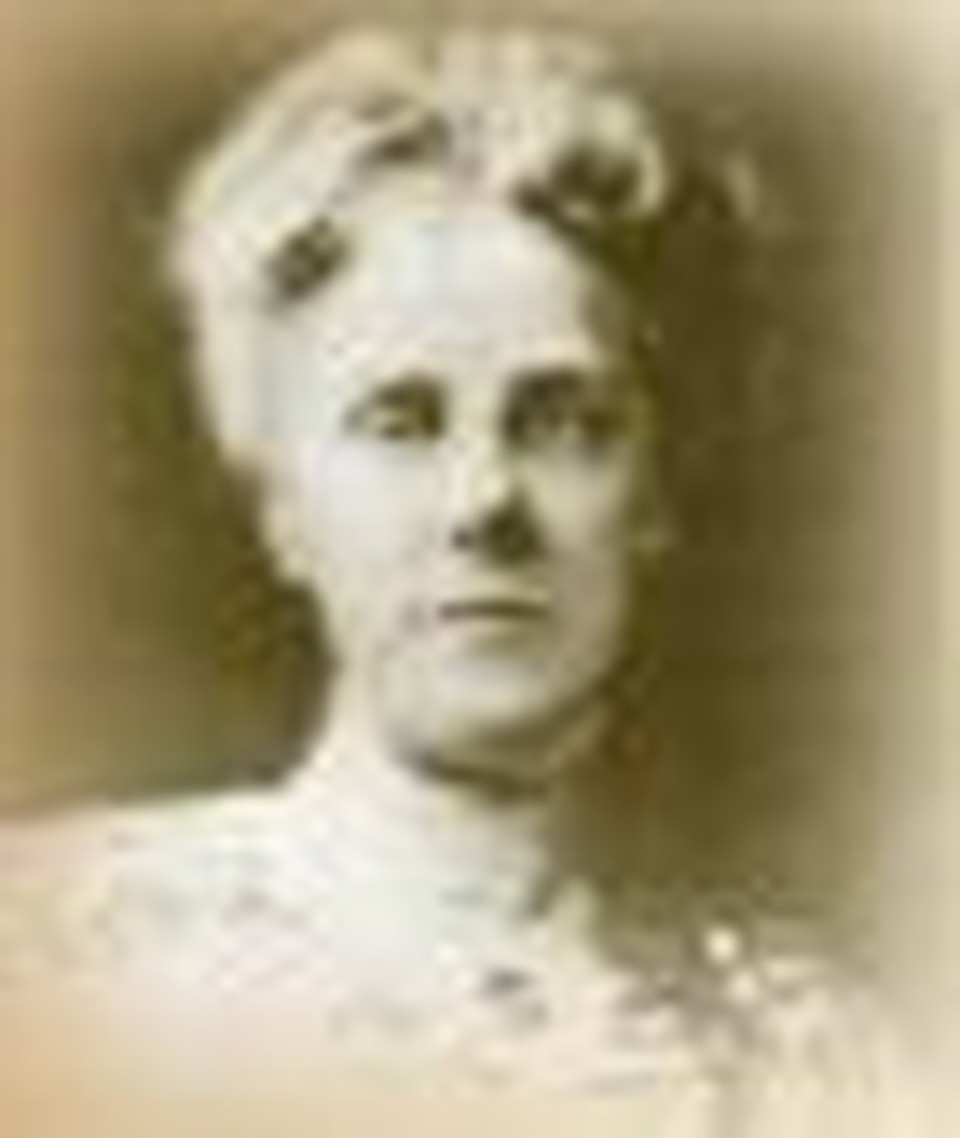The Christian Origins of Mother's Day

Every year on the second Sunday of May, families in the United States and several other countries celebrate Mother's Day. In this issue of Glimpses, we take a look at the origin of that celebration.
Mother's Day, as we know it, began with Anna M. Jarvis. Anna was deeply attached to her mother, Mrs. Anna Reese Jarvis. Mrs. Jarvis was the daughter of a pastor and taught in Sunday school at the St. Andrews Methodist Episcopal Church in Grafton, West Virginia.
One of Mrs. Jarvis' dreams had been to establish a Mother's Day. She died in 1905 without ever achieving her goal. Two years later, the Sunday school superintendent of the Grafton congregation asked Anna (the daughter) to help him arrange a memorial for the woman who had been so influential in his church. This set Anna thinking. Remembering her mother's dream of an annual Mother's Day, she decided to take up her mother's cause. It seemed to her that children often did not do enough to show their appreciation for mothers and all their mothers did for them.
Grafton held a special service on the second Sunday of May 1907, the anniversary of Mrs. Jarvis' death. The following year, Anna convinced her own church in Philadelphia to hold a Mothers' Day service on May 10, 1908. Anna supplied the church with white carnations, her mother's favorite flower.
After this celebration, Anna wrote thousands of letters and held many interviews to promote a national Mother's Day. She also enlisted friends to help her cause.
Others had made similar attempts to establish an annual Mother's Day and failed. It took Anna and her friends six years, but at last they succeeded. On May 8, 1914, both houses of the United States Congress passed resolutions establishing a Mother's Day observance. The next day, acting on the authority of that resolution, President Wilson issued a Mothers' Day proclamation, which read in part:
"Now, Therefore, I, Woodrow Wilson, President of the United States of America, by virtue of the authority vested in me by the said Joint Resolution, do hereby direct the government officials to display the United States flag on all government buildings and do invite the people of the United States to display the flag at their homes or other suitable places on the second Sunday in May as a public expression of our love and reverence for the mothers of our country."
Nine years after Mother's Day had been established, Anna was in court, having filed lawsuits because she wanted to put a stop to the commercialization of Mother's Day. Her intention had been to create a day of reflection and quiet prayer in families, a day for thanking God for mothers and all that they do for us. Instead, it had become a merchant's paradise.
Alas, Anna's lawsuit was doomed to failure. Today, the sale of Mother's Day cards alone can approach $150 million in a year. After this, Anna became bitter. Events conspired to darken her final days. She lost her property. A sister whom she cared for died. She herself became almost blind and deaf. In dire poverty, she was forced to appeal for public assistance. Friends gathered around her and raised enough money to ease her last years. Anna died in 1944. Ironically, she never married or had a child of her own to call her mother.
Today, Mother's Day is not usually celebrated by quiet prayer or the display of flags that Anna envisioned, but with gifts, cards, visits, phone calls, hugs, thank yous and other tokens of affection. In some countries, the celebration of appreciation lasts for two days.
Thanks to the efforts of Anna M. Jarvis, Mother's Day is observed not only in the United States but also in Australia, Belgium, Canada, China, Denmark, Finland, Italy, Japan, Mexico, Turkey and parts of Africa and South America.
In 1962, the Methodist Episcopal Church of Grafton, Virginia (which held the "first" Mother's Day celebration), was incorporated as the International Mother's Day Shrine. Located on main street in downtown Grafton, it is open to the public Monday through Friday.
These Well-Known Christian Mothers Never Bore Children
Anna M. Jarvis, the founder of Mother's Day, never had children of her own. Many other godly women have experienced the same. Some, however, were blessed with other opportunities to be a mother. Here are a few from Christian history:
- Gladys Aylward (ca. 1904 - 1970) Gladys was a parlor maid who longed to go to China as a missionary. Rejected by mission societies, she saved enough to go on her own. During her second year in Yangchen, she saw a woman begging with a malnourished five-year-old who had evidently been kidnapped. Gladys bought the girl for ninepence, and Ninepence became her name. Later the girl brought in a starving boy and said she would eat less so that they could keep him, too. The boy's name became "Less." Eventually Gladys had many orphans in her care. In 1938, she led 100 of them on a twelve-day trek, fleeing Japanese invaders. Having delivered her children to authorities, she collapsed of typhus and other serious ailments. The Chinese called her "Ai-weh-deh," which means "Virtuous One." Ai-weh-deh recovered from the typhus and lived until 1970.
- Lillian Trasher (1887 - 1961) When Lillian Trasher became a Christian, she told the Lord, "If there's ever anything I can do for you, let me know." To begin with, she felt obliged to break off her engagement. The Lord then sent her to Egypt without funds. In time she founded Egypt's first missionary orphanage. Usually when she went to bed at night she did not know where food would come from the next day. Like George Müller, she prayed in daily supplies. Over the years, she cared for thousands of children, and none of them went hungry. She was known as "The Mother of the Nile."
- Mary Slessor (1848 - 1915) Mary was a missionary to Calabar, Nigeria, a deadly stretch of the African coastline known as "the white man's grave." The natives believed that if a woman had twins, one of them was a devil, and that child was left in the jungle to die. Mary rescued and adopted many of these children as her own.
Famous Christian Mothers
- Mary (fl. First century). The most famous Christian mom of all time is Mary, the mother of Jesus. By her example, yielding to God's will and saying, "I am the Lord's servant; May it be to me as you have said," she has been an inspiration to many generations of women and men.
- Macrina the Elder (ca. 265 - ca. 340). Not many people can lay direct claim to as many influential Christian grandchildren as Macrina and her husband. The godly couple were persecuted terribly by Roman authorities and fled to the forest where they ate wild plants and hid among the trees. Later their home and all their property were confiscated. Nothing shook their faith. The pair had a son named Basil. He was father to ten children, three of whom became the most exceptional Christians of the fourth century. These were Macrina the younger, Basil the Great and Gregory of Nyssa. Grandma Macrina imparted her faith to all three of them, for which Basil praised her in his writings.
- Monica (ca. 331 - 387). The story of Monica and how she won her famous son, Augustine, to Christ is well-known. Though the wife of a non-Christian, Monica prayed that her family might eventually all come to Christ. She attempted to bring her children up in the ways of the Lord, and it pained her to see them stray from the truth. Her most promising son, Augustine, was given an excellent education, and Monica hoped this might be a means of his more fully reaching God. Augustine ignored his mother's admonitions and pursued a life of self-gratification and immorality while continuing his classical education. Monica didn't have the words to convince her son of the truth of Christianity, but she determined never to stop praying that he would turn to God. When Augustine went to Italy to teach, Monica, by then a widow, followed him there. In Milan she attended the church pastored by Ambrose and rejoiced when Augustine was befriended by Ambrose and eventually became a Christian and the most influential theologian of the Middle Ages.
- Gwen (d. ca. 492). Gwen was a Welsh queen who tradition says was the sister of Saint Nonna and the aunt of Saint David of Wales, two of the most notable Christians leaders in Wales at that time. Furthermore, she was the mother of Saints Cyby and Saint Cadfan. She also founded a church before her death at the hands of heathen Saxons around 492.
- Susannah Wesley (1669 - 1742). As the mother of John and Charles Wesley, Susannah was literally the mother of Methodism. A daughter in one large family (25 children), she had a large family of her own (at least 17 children). To manage such a houseful with little income and many trials (her home burned down twice) she had to organize well. She learned to trust God. Furthermore, she read and taught the Scriptures to her neighbors. She once wrote: "We must know God experientially. . .the heart [must] perceive and know Him to be to be the supreme good, her only happiness. . .the soul feel and acknowledge that she can have no repose, no peace, no joy, but in loving and being loved by Him." John and Charles did not get their character and interests from the neighbors.
Miscellaneous Mother's Day Facts
- The Bible gives Eve the name "Mother of All Living."
- England had a mother's day long before the United States. It was called Mothering Sunday. Dating from the seventeenth century, it was observed in the middle of Lent. Ancient Greeks and Latins also observed something like Mother's Day.
- In 1917, Japan celebrated its first Mother's Day at the instigation of American Methodist missionary Mira E. Draper, who formed an Association for Mothers in Japan.
- The value of shipments of Mother's Day cards by greeting card publishers reached $147.9 million in 1992.

Originally published June 11, 2010.







